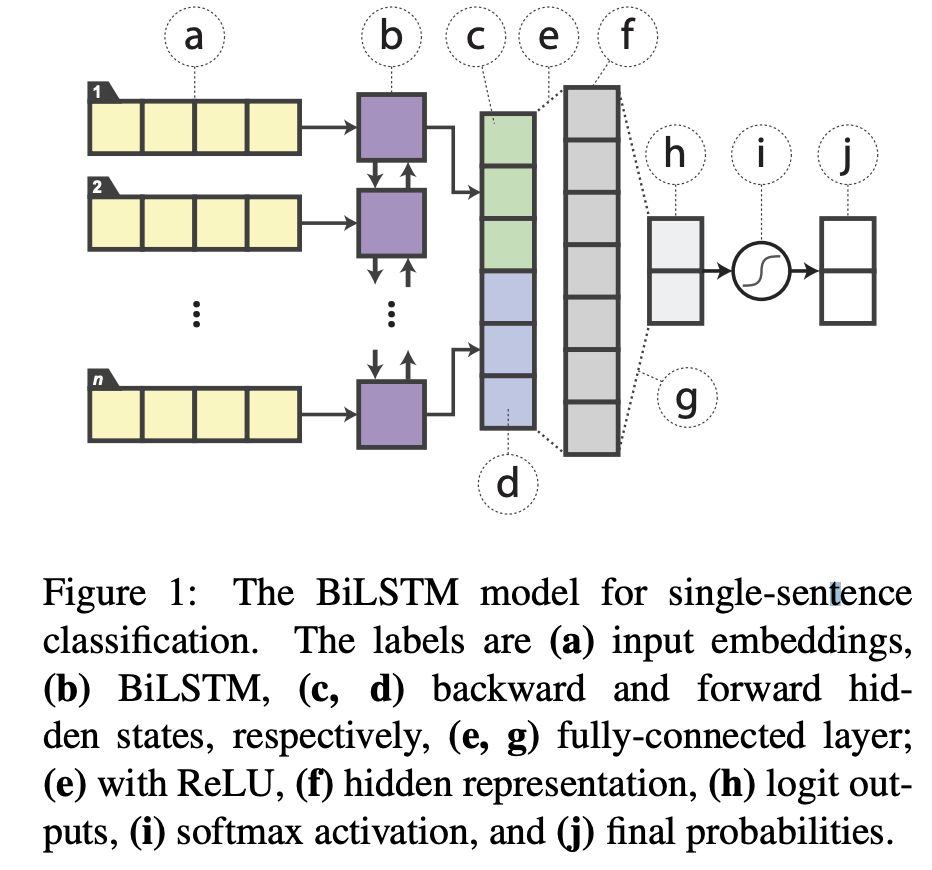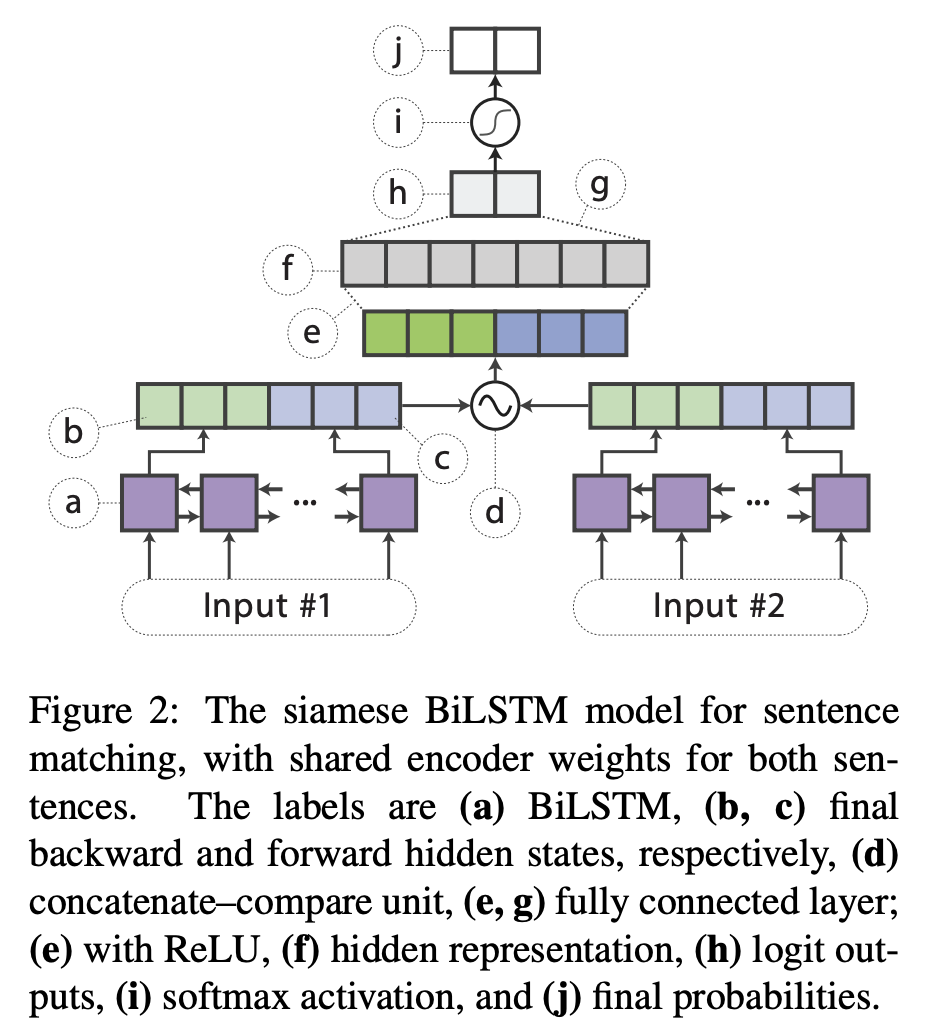bert加速
标签:lamb, bert, cubert, mklbert, megatron目录
更多参考:https://daiwk.github.io/posts/nlp-paddle-lark.html
LAMB
参考76分钟训练BERT!谷歌大脑新型优化器LAMB加速大批量训练
论文:Reducing BERT Pre-Training Time from 3 Days to 76 Minutes
cuBERT
https://github.com/zhihu/cuBERT
distill
Distilling Task-Specific Knowledge from BERT into Simple Neural Networks
首先,distill相关的可以参考https://daiwk.github.io/posts/dl-knowledge-distill.html
背景与相关工作
要进行distill就需要大量的无标签数据,然后让大模型给出logits,但nlp领域不像图像,可以简单地data augmentation。传统的nlp的data augmentation通常是task-specific的(例如GLUE: A multi-task benchmark and analysis platform for natural language understanding,或者Generating factoid questions with recurrent neural networks: The 30m factoid question-answer corpus),本文提出了一个rule-based的用来构建transfer set的data augmentation方法。
模型压缩
开山之作是lecun在1990年的Optimal brain damage,提出了一个local error-based的方法来剪枝不重要的weight。
2015年的Compressing deep neural networks with pruning, trained quantization and Huffman coding提出了一个简单的压缩pipeline,可以把模型大小缩小40倍,且不对准确率造成损伤。
但上面的这些方法会引入高度不规则的稀疏性(highly irregular sparsity),阻止了高度优化的计算routines。
所以其他人会使用一些以设备为中心的指标( targeting device-centric metrics),例如浮点数运算(FLOPs as a direct optimization objective for learning sparse neural networks),或者响应时间(Constraint-aware deep neural network compression),来直接把整个filters剪枝掉(如Pruning filters for efficient convnets,或者Learning efficient convolutional networks through network slimming)。
还有些人直接研究量子神经网络(如Training and inference with integers in deep neural networks)。甚至还有提出用二进制权重和激活的二进制网络来搞,Binarized neural networks: Training deep neural networks with weights and activations constrained to +1 or -1
而distill的方法能将大模型(teacher)的知识transfer到一个完全不同结构的小模型(student)中,在nlp领域已经有两个例子了:机器翻译的Sequence level knowledge distillation,还有语言模型的On-device neural language model based word prediction。
网络结构与方法
拆成两大步:
- 加上logits-regression objective
- 建立transfer set,对训练集做augmentation从而可以让knowledge transfer更有效
bert模型对一个句子或者pair,会产出一个特征向量\(\boldsymbol{h} \in \mathbb{R}^{d}\),我们基于这个向量来构建分类器:
- 单个句子的分类:直接加一个softmax层,
\(\boldsymbol{y}^{(B)}=\operatorname{softmax}(W \boldsymbol{h})\),其中\(W \in \mathbb{R}^{k \times d}\)是softmax层的权重矩阵,\(k\)是label数 - 句子pair的任务:将两句话的feature进行concat,然后扔给一个softmax层
训练阶段,同时finetune bert的参数和softmax层的参数,目标是label的cross-entropy loss。
student模型
- 单个句子的分类:如下图,word emb之后接一个双向lstm,两个方向的输出concat到一起,然后接全连接(用的Relu),然后再接softmax。

- 句子pair的任务:如下图,对两个sentence encoder使用siamese结构我双向lstm,分别产生
\(\boldsymbol{h}_{s_1}\)和\(\boldsymbol{h}_{s_2}\),然后做一个标准的concatenate–compare操作(参考GLUE: A multi-task benchmark and analysis platform for natural language understanding),即\(f\left(\boldsymbol{h}_{s 1}, \boldsymbol{h}_{s 2}\right)=\left[\boldsymbol{h}_{s 1}, \boldsymbol{h}_{s 2}, \boldsymbol{h}_{s 1} \odot\right. \boldsymbol{h}_{s 2},\left|\boldsymbol{h}_{s 1}-\boldsymbol{h}_{s 2}\right| ]\),其中\(\odot\)是element wise乘积,然后把这个结果给一个relu的分类器。

distill目标
softmax的输入也就是logits是\(z=w^Th\),输出是:
\[
\widetilde{y}_{i}=\operatorname{softmax}(\boldsymbol{z})=\frac{\exp \left\{\boldsymbol{w}_{i}^{\top} \boldsymbol{h}\right\}}{\sum_{j} \exp \left\{\boldsymbol{w}_{j}^{\top} \boldsymbol{h}\right\}}
\]
本文使用Caruana等人的Do deep nets really need to be deep?方法,distillation objective是student和teacher的logits的mse:
\[
\mathcal{L}_{\text { distill }}=\left\|\boldsymbol{z}^{(B)}-\boldsymbol{z}^{(S)}\right\|_{2}^{2}
\]
其中,\(\boldsymbol{z}^{(B)}\)是teacher的logit,\(\boldsymbol{z}^{(S)}\)是student的logit。其他方法比如hinton在2015年的Distilling the knowledge in a neural network使用soft target的cross entropy也是可行的,但在这个任务上效果还是mse稍好一点。
训练的时候,这个distillation objective可以和传统的针对one-hot的label的cross-entropy一起用:
\[
\begin{aligned} \mathcal{L} &=\alpha \cdot \mathcal{L}_{\mathrm{CE}}+(1-\alpha) \cdot \mathcal{L}_{\mathrm{distill}} \\=&-\alpha \sum_{i} \log y_{i}^{(S)}-(1-\alpha)\left\|z^{(B)}-z^{(S)}\right\|_{2}^{2} \end{aligned}
\]
实验结果显示,\(\alpha\)设成0的时候,也就是只使用distill的loss,效果最好。
- 对于有label的数据集,one-hot target
\(t\)直接用ground-truth的label - 对于无label的数据集,可以直接用teacher的预估label:
\(t_{i}=1\ if\ i=\operatorname{argmax} y^{(B)}\),否则就是0
用于distill的augmentation
随机使用以下几个操作之一:
Masking
以\(p_{\text { mask }}\)的概率,随机地将一个词替换为[MASK],在student模型里就是[UNK],而在bert中就是mask。这个规则能够clarify每个词对label的贡献,例如,teacher网络对于I [MASK] the comedy产生的logits比“I loved the comedy产出的logits要低。
POS-guided word replacement
以\(p_{\text { pos }}\)的概率,随机地把一个词替换成相同POS(part-of-speech) tag的另一个词(如,把how替换成what)。为了保持原始的训练集的分布,新词从使用POS tag进行re-normalize的unigram的分布中采样出来。
n-gram sampling
以\(p_{\text { ng }}\)的概率,从\(\{1,2, \dots, 5\}\)中随机选一个\(n\),然后随机采样出一个ngram。这种方法相当于随机扔掉句子的其他部分,是一种更aggressive的masking。
整个augmentation的流程
给定一个训练样本\(\left\{w_{1}, \dots w_{n}\right\}\),整个augmentation的过程如下:
- 对每个词
\(w_i\)从uniform distribution\(X_{i} \sim \mathrm{UNIFORM}[0,1]\)中采样出一个\(X_i\)如下操作- 如果
\(X_{i}<p_{\mathrm{mask}}\),对\(w_i\)进行masking - 如果
\(p_{\text { mask }} \leq X_{i}<p_{\mathrm{mask}}+p_{\mathrm{pos}}\),那么对\(w_i\)使用POS-guided word replacement
- 如果
- 对这个样本的每个词处理完之后,以
\(p_{\text { ng }}\)的概率,使用n-gram sampling,然后把结果加到augmented数据集中(无标签)
然后使用\(n_{\text { iter }}\)次如上操作,得到\(n_{\text { iter }}\)个augmented的sample。
土豪版:Megatron
https://github.com/NVIDIA/Megatron-LM
有钱任性:英伟达训练80亿参数量GPT-2,1475块V100 53分钟训练BERT
- 将BERT的训练时间缩短到了53分钟;
- 将BERT的推理时间缩短到了2.2毫秒(10 毫秒已经是业界公认的高水平);
- 将GPT-2的参数量推向80亿(以前OpenAI GPT-2最大为15亿参数量)。
最大配置:72层、每层隐藏单元都是3072
论文:Megatron-LM: Training Multi-Billion Parameter Language Models Using GPU Model Parallelism
该方法无需新的编译器或库更改,它与 pipeline 模型并行正交且互补,只需在 PyTorch 中嵌入几个通信操作即可完整实现。利用该方法,研究者使用 512 个 GPU 收敛了一个具备 83 亿参数的 transformer 语言模型,该模型是目前最大的 transformer 模型,其规模是 BERT 的 24 倍,GPT-2 的 5.6 倍。
为了展示该方法的可扩展性,研究者建立了一个基线:他们在单个 NVIDIA V100 32GB GPU 上训练了一个具备 12 亿参数的模型,整个训练应用维持 39 TeraFLOPs/秒的性能,是单个 GPU 在 DGX-2H 服务器上运行的理论峰值 FLOPS 的 30%,因此这是一个非常强大的基线模型。将该模型扩展至 83 亿参数,并使用 8-way 模型并行化在 512 个 GPU 上进行训练,达到了 15.1 PetaFLOPs/秒的性能。与单个 GPU 的情况相比,它实现了 76% 的扩展效率。在 174 GB 文本数据上收敛该模型需要以 12 ZettaFLOPs 训练 9.2 天。
研究者利用 transformer 网络的结构,仅添加几个同步基元(synchronization primitives)即创建出一个简单的模型并行化实现。他们对 transformer 中的自注意力模块和多层感知机(MLP)模块均采用了模型并行化。
模型并行与数据并行是正交的,因此我们可以同时使用二者在合理时间内训练大型模型。
原创文章,转载请注明出处!
本文链接:http://daiwk.github.io/posts/platform-bert-speedup.html